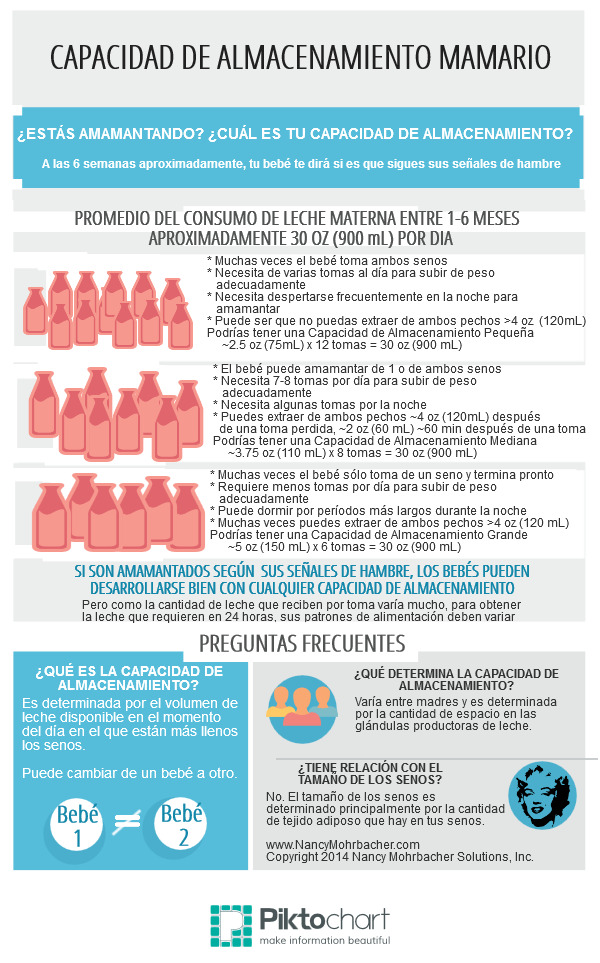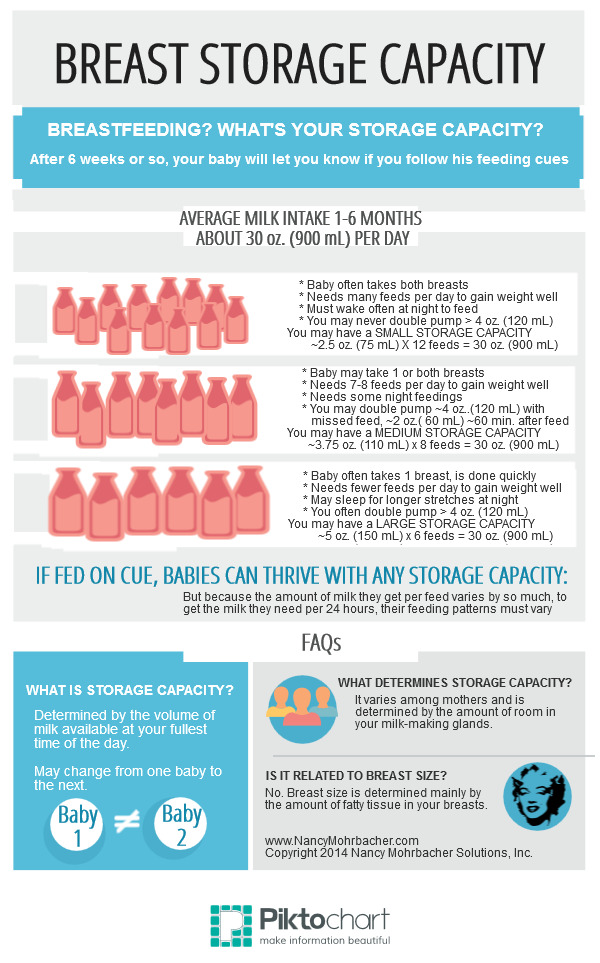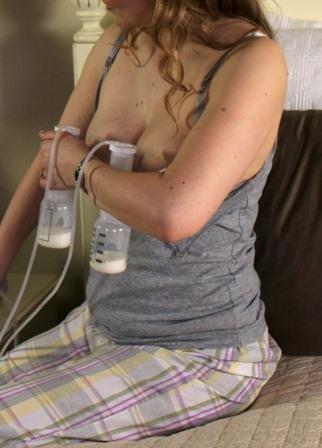During this time of transitions, breastfeeding affects family dynamics. Although many couples decide to nurse in part for the closeness it brings, they are often unprepared for the intensity of this physical link between nursing parent and baby. Nursing can be more than feeding; for many it is also an act of intimacy. Lactation hormones relax nursing parents and heighten their sensitivity to their child, evoking an intense desire to respond to baby’s cries. While nursing, baby experiences the parent through all five senses, finding at the breast security and comfort, as well as milk.
Since nonlactating partners lack this intense physical link and natural source of comfort, what does this mean to their relationship with the baby? In studies, some fathers of breastfeeding babies report feelings of frustration and inadequacy because they were unable to easily comfort their babies during the mothers’ absence. When they realized their relationship with their baby was different from the mothers’, they reported feeling a sense of loss. Even so, these study fathers continued to support breastfeeding. Those who wanted to be most actively involved with their babies reassured themselves that this difference wouldn’t last forever and found other ways to be involved in their babies’ care. Rather than attempting to duplicate the breastfeeding relationship, they found they could develop their own unique relationship with their children.
For some partners, though, feelings of frustration and inadequacy cause them to back off and become even less involved in their baby’s care, leading to resentment and jealousy at their partners’ absorption with the baby. Some partners perceive the bond between the baby and the nursing parent as a threat.
What should a couple do if the partner begins to develop feelings of resentment or jealousy? In her book, Mothering and Fathering: The Gender Differences in Child Rearing, Tine Thevenin writes:
“The adjustment that comes with having a child takes effort and understanding. Instead of allowing misunderstandings about each other’s feelings to create a rift, I would suggest that both partners explore and acknowledge their own–and each other’s–emotional responses, while at the same time adopting an attitude of, ‘How can I be of greatest help in our relationship and our family?’”
No matter how the baby is fed, the partner has an important choice to make. Will he or she feel left out and become a bystander in the baby’s care or take an active role in developing a positive relationship with the baby?
The relationship between the partner and the child is intimately linked to the emotional health of the whole family. The couple’s relationship will be affected, as well as the nursing parent’s ability to meet her or his own needs. When nursing parents have confidence in their partner’s good relationship with their baby, they will feel freer to take the time they needs for themselves. And when they sees their baby and their partner happy together, it makes them feel even better about their partner.
WHAT ABOUT BOTTLES?
Although feeding is one way to interact with a baby, many couples have found that giving bottles doesn’t guarantee closeness. Julie Stock, mother of three, discovered this when she walked in on her partner absent-mindedly feeding their firstborn a bottle with his eyes glued to the football game on television. They decided to forgo bottles with their next two children and later she came to the conclusion that during their babyhood “my partner actually felt closer to the two children who didn’t get bottles, because he had to invest more of himself and be more creative during their time together.”
If the partner will be giving bottles, such as when the nursing parent is out for a few hours or when caring for the baby after the nursing parent goes back to work, it is best to wait until the baby is about a month old before introducing them. Some babies have difficulty going back to the breast if artificial nipples are introduced early, while they are just learning to breastfeed. Once a baby nursed well for 3 to 4 weeks, this problem is much less likely to occur.
In the book Becoming a Father pediatrician and father of eight, Dr. William Sears writes:
“I discourage supplemental bottles especially during the first month because of the risk of disturbing the breastfeeding harmony that mother and baby are working so hard to establish. Instead I encourage fathers to understand, respect, and support the uniqueness of the breastfeeding relationship….In the meantime, supplemental nourishment from dad should go to the mother.”
WHAT PARTNERS CAN DO
There are many other ways a partner can develop a loving relationship with a nursing baby. First, be aware that mixed feelings are normal. And if a baby obviously prefers the nursing parent and is unresponsive to the partner at first, it may feel frustrating and discouraging. But even if this happens, it is important to continue to work at the relationship. Some babies take a while to warm up to the partner’s overtures. Sensitivity and patience go a long way toward building closeness.
One way to show sensitivity to a baby is recognize and respond to baby’s cues. Notice what happens when you talk to her. Tiny babies have a short attention span and are easily overstimulated. If she turns away, seems uninterested, pensive, or drowsy, just hold her close or try again later. Eye contact, reaching out, or smiling may mean that she’s ready to interact. Just like adults, each baby is a person with preferences. She may like some ways of touching, holding, and playing and not others. If she likes what you’re doing, keep it up and try it again another time. If she does not respond or seems upset, try something else.
In his book, Becoming a Father, Dr. Sears confesses that he didn’t learn how to be fully involved until his sixth child. His suggestions for partners with babies younger than 3 months (the age that many find particularly challenging) include a lot of touching and holding, which he feels helps a partner and baby “feel right” together. Some of these early activities include:
the “neck nestle,” in which the baby nestles her head against the front of the partner’s neck;
the “warm fuzzy,” in which the partner drapes the infant, skin-to-skin over his or her chest with the baby’s ear over the heartbeat
various holds that the partner can use to comfort baby
bathing together
wearing the baby in a carrier or sling
infant massage
HOW NURSING PARENTS CAN HELP
The nursing parent’s role in encouraging a strong partner-child relationship is one that is very difficult for many to carry out, especially during the early weeks. During the time when nature programs birthing parents to protect their baby at all costs, they needs to overcome their natural inclination to hover while the partner cares for the baby. They need to keep quiet when they feel the urge to comment on or criticize the partner’s efforts. (Does it really matter if at first the baby’s shirt is on backwards and his diaper is a little loose?) They need to step back and let the partner-child relationship develop without them. The more of a perfectionist the nursing parent is, the more difficult this can be.
Ginny Rossi, a first-time mother, tells how she helped encourage her partner and son to become close:
“We started off slow. During the early weeks my partner would sit next to us while we nursed, touching and caressing Marco, and afterwards he would do the burping. Eventually, after burping, Marco began to fall asleep on his dad’s chest and got used to being close to him. After some weeks of this, Marco was more willing to be comforted by his dad.
“Now that Marco is 8 months old, my partner takes him for a couple of hours every day, and they both look forward to their time together. Not only does it make me happy to see them enjoying each other so much, but this gives me a needed break, which helps me feel better about full-time motherhood. I am convinced that their closeness today stems from their early time together.”
In this age when couples strive for equal partnerships, one of the lessons of pregnancy, childbirth, and nursing is that sharing an equal commitment to parenthood does not necessarily mean fulfilling the same roles. Baby stands to benefit most when parents take the role most suited to them. During a nursing baby’s early weeks and months, this may mean the relationship between nursing parent and baby is more intense. But a newborn needs to develop other relationships, too, and this need grows as he matures. With partner and baby, just as with any relationship, greater investment brings greater rewards.



























